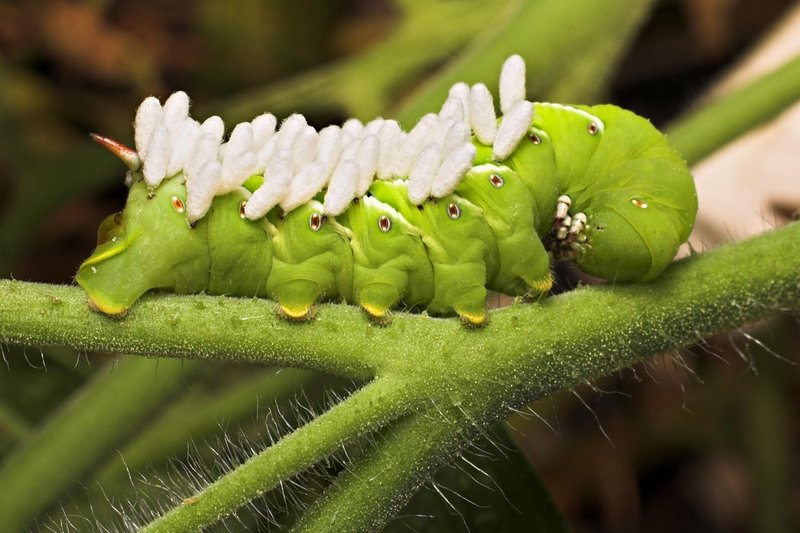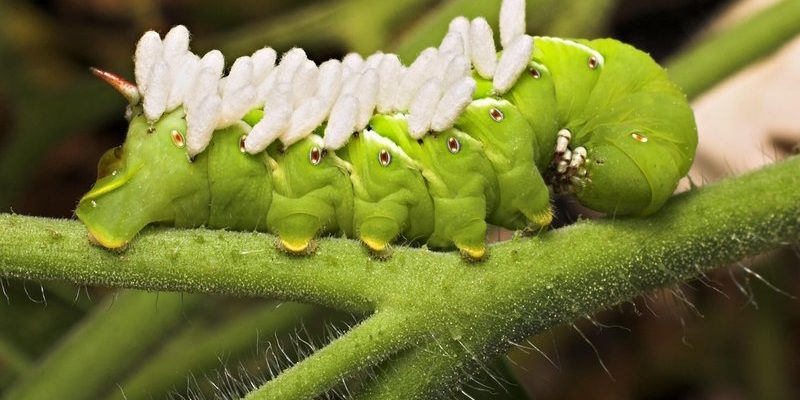
Understanding hornworm population spikes is crucial for any gardener or plant lover. These spikes can lead to sudden increases in caterpillar activity, which can damage crops and flowers significantly. In this article, we’ll dive deep into the factors that contribute to these jumps in hornworm numbers, much like peering into a mysterious garden world where nature’s balance is constantly at play.
What Are Hornworms?
Before we dive into why hornworm populations spike, let’s talk about what they actually are. Hornworms are the larvae of moths, specifically the *Manduca sexta* and *Manduca quinquemaculata*. You might spot them on your plants, and you’ll recognize them by their distinctive green color and horn-like projection at the rear.
These little guys are not just small; they can grow up to 4 inches long! Believe it or not, their appetite is as impressive as their size. They can munch through leaves like a kid with candy after dinner! A single hornworm can eat an entire tomato leaf in just a day, leaving you wondering where all your greenery went.
When hornworm populations spike, it can seem like you went to sleep in a garden paradise and woke up in a caterpillar horror movie. But don’t worry; there are ways to manage it, starting with understanding why they multiply.
Weather Conditions and Environmental Factors
Weather plays a significant role in the rise and fall of hornworm populations. These caterpillars thrive in warm, humid conditions. If you live in an area where spring and summer bring lots of rain and sunshine, you’re likely to see a hornworm population boom.
Here’s the thing: *a few crucial weather patterns can spark these increases*:
- Warm Temperatures: Hornworms prefer warm climates, with optimum growth occurring between 70°F and 80°F.
- Moisture Levels: High humidity levels create a perfect environment for hornworm eggs to hatch and thrive.
- Long Growing Seasons: Areas with extended growing seasons often see more crops, enticing moths to lay more eggs nearby.
So, if you’re experiencing a particularly warm and rainy season, brace yourself! Your plants may be at greater risk of a hornworm invasion. Think of it like planting the seeds for a buffet feast for these hungry caterpillars.
Food Availability
Food availability is another big player in the world of hornworm population spikes. These caterpillars are notorious for their insatiable greed and can devour vast quantities of leaves. When conditions are perfect—read: plenty of food—hornworms can multiply quickly.
Good news for your plants: Hornworm larvae are picky eaters. They primarily feast on the leaves of plants like tomatoes, peppers, and eggplants. If you have a thriving vegetable garden filled with these plants, you’re essentially rolling out a welcome mat for hornworms. Here’s how food availability contributes to their population:
- Healthy Vegetation: Abundant green plants provide ample food for hornworms, allowing them to grow and reproduce quickly.
- Diverse Diet: If you’re growing a variety of host plants, it can attract more moths, leading to more hornworm eggs.
- Lack of Natural Predators: In environments where hornworms have few natural enemies, their numbers can explode.
If you want to keep hornworms at bay, consider rotating your crops or mixing in plants that aren’t appealing to these munchers.
Life Cycle and Reproduction
The life cycle of a hornworm is both fascinating and crucial to understanding their population spikes. These insects undergo a complete metamorphosis: egg, larva (hornworm), pupa, and adult moth. Each stage plays a role in their overall numbers.
Let’s break it down:
1. Egg Stage: Female moths lay clusters of tiny eggs on the underside of leaves. A single moth can lay up to 200 eggs!
2. Caterpillar (Larva) Stage: After hatching, the larvae munch their way through your plants. This stage lasts about 3-4 weeks, during which they grow rapidly.
3. Pupa Stage: Hornworms burrow into the soil, where they transform into pupae for about 10-14 days.
4. Adult Moth: Finally, the adult moth emerges, ready to start the cycle all over again.
So, when hornworms suddenly seem to appear in large numbers, *it’s often because multiple generations have developed in quick succession*. This is especially true in warm, moist climates where conditions are ideal.
Pest Management and Control Measures
Understanding what causes hornworm population spikes is step one; the next is managing them effectively. If you don’t want your garden to turn into a hornworm buffet, let’s explore some strategies to keep these pesky pests in check.
1. Handpicking: If you spot hornworms on your plants, simply picking them off is a very effective method—just wear gloves!
2. Natural Predators: Encourage birds, wasps, and other natural predators to visit your garden. They’ll help keep hornworm numbers down.
3. Insecticidal Soap: For larger infestations, consider using insecticidal soap or neem oil. These treatments are generally safe for plants and can help repel hornworms.
4. Companion Planting: Some plants, like marigolds, can deter hornworms and other pests. Mixing them in your garden can add layers of protection.
Using these methods can help manage your garden ecosystem better, ensuring that hornworm spikes don’t lead to a crisis.
Hornworm population spikes can be alarming, but understanding their causes helps you prepare and defend your plants. Whether it’s the right weather, abundant food, or the hornworm’s fascinating life cycle, each factor plays a role in their quick rise.
By taking steps to manage these invaders, you can keep your garden healthy and thriving. Remember, it’s all about balance. With a little knowledge and effort, you can enjoy a flourishing garden, free from the damage of a hornworm takeover! So, next season, as you sip your coffee and admire your plants, you’ll be ready for anything nature throws your way. Happy gardening!

